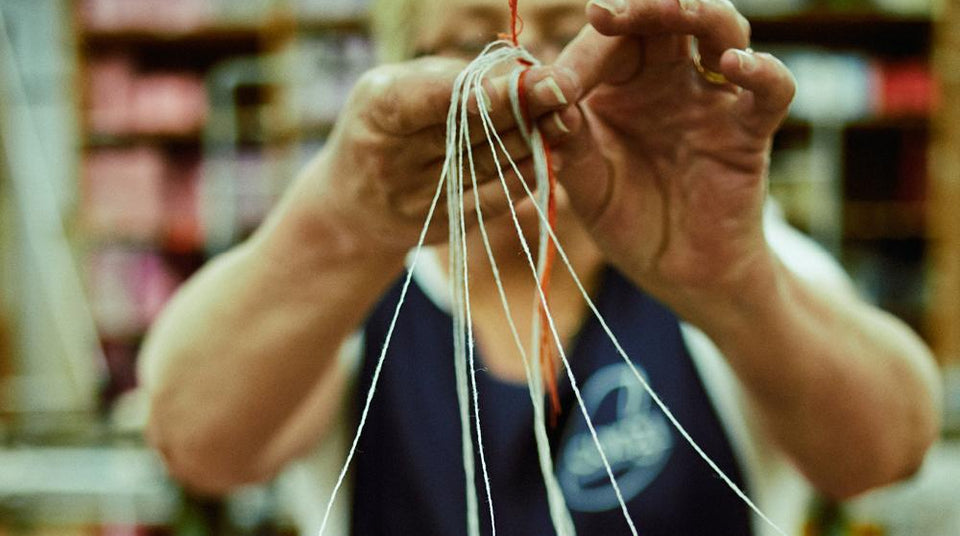Crafted by Hand in the Welsh Valleys

The Aran jumper brings together three unique knitting techniques, formed from natural British wool. Behind each of our Aran jumpers lies one single person.
Ann is one of the longest-standing employees at Corgi, a family-run company which has been making premium knitwear pieces from its workshop in the Welsh Valleys since 1892. We speak to Ann about her impressive 47 years at Corgi, her life and what it takes to knit the perfect jumper.
Turnbull: What originally led you to start knitting?
Ann: My Aunty Glenys taught me to hand-knit when I was a young girl and I haven’t stopped since.
How did your career at Corgi begin?
At the age of 15, I left school and was told by a friend, who had recently started work at Corgi, that there were more school leavers jobs available. I lived just up the road; so I went to the factory one afternoon and was interviewed on the spot. I started the very next day. The rest is history.
What are the stages of creating the perfect piece of knitwear?
We start by knitting a tension swatch to make sure the machine is set up correctly and then we normally knit the back panel. We measure the length and width of this piece to see if it has come to size. If so, we knit the front, sleeves and then collar. If the measurements don’t match we have to either loosen or tighten the tension and knit the panel again to fit.

What skills do you think are important in order to be a great knitter?
Good maths skills, ability to concentrate in a busy environment and a lot of patience.
Can you tell us about the wool used in the Aran Jumper?
The yarn is made from British wool, sheared from sheep that were bred and looked after locally. The wool is then cleaned and spun before being dyed to the off-white shade of the final sweaters. This is all done at Laxtons which is a UK company established over 100 years ago who specialises in British yarns.
Could you please explain a bit about the process of making the jumper?
There is over a kilo of yarn in each sweater. Knitting the 500 rows required, to form a jumper, takes me nearly 8 hours to knit. Even after all the pieces are knitted, the garment still has to be stitched together, collar sewn on and then wet finished before going on to be dried and pressed, a process which takes another few hours.

Could you please tell us a little about the machine you use?
The machine we use has two rows of needles that enable me to move stitches from one side to the other to create the cable effect seen across the sweater. The machine is over 100 years old, designed in Switzerland by Henri-Edouard Dubied the son of an absinthe distiller. He founded the business after attending the Exposition Universelle in 1867, where he bought the rights to make hand-cranked knitting machines from Isaac W. Lamb. These knitting machines were originally designed for making socks and hosiery, which we still use in the factory to make socks.

What helps you to work through the hours required to make a jumper?
As many of the pieces I knit are quite complicated, I don’t listen to music while I’m working as I find it too distracting. But you can always find a packet of jelly babies near my machine for an afternoon snack.
How do you spend your time outside of the workshop?
I love to browse the shops in town and spend time with my two grandchildren who often come to stay with me. I walk my dog every evening, come rain or shine - I find it’s a great way to stay fit. And I love looking after my fat cat Alfie, too!
What do you enjoy most about living in Wales?
I was born here and have lived here my whole life. I love being close to my family and living in such a close-knit and friendly community. I get to have access to the wonderful countryside on my doorstep and can easily reach the beach too.

With thanks to Corgi for sharing photographs of their work room. Credit to James Alexander Foxhall for his image of the Welsh Valleys.


